|
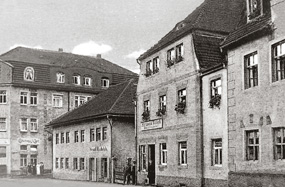 In the middle In the middle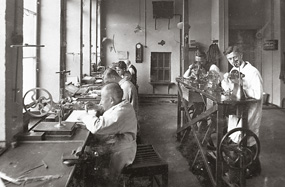 of the XIX century an event, that changed not only the local dwellers' way of life, but the quality of time measuring for all Saxony, took place in a small mountain village of Glashütte. In 1845 a watch craftsman Ferdinand Adolph Lange founded a high precision watch movements production manufacture. It turned into the center of the German watchmaking industry and the company's produce got worldwide popularity for a rather short period of time. Inventive Lange reformed watch production, discarding the old watchmaking canons. He invented the so-called “three-quarter plate”, that soon became an inseparable part of all timepieces from Glashütte. of the XIX century an event, that changed not only the local dwellers' way of life, but the quality of time measuring for all Saxony, took place in a small mountain village of Glashütte. In 1845 a watch craftsman Ferdinand Adolph Lange founded a high precision watch movements production manufacture. It turned into the center of the German watchmaking industry and the company's produce got worldwide popularity for a rather short period of time. Inventive Lange reformed watch production, discarding the old watchmaking canons. He invented the so-called “three-quarter plate”, that soon became an inseparable part of all timepieces from Glashütte.
At the beginning of the XX century A.Lange & Sohne watch company was recognized the national endow of Germany. Before the start of the First World War it played a significant role in the Saxon region's industrial development. The warfare influenced Glashütte watch industry development. Some watch company were on the brink of bankruptcy, others had to reduce the staff. After the First World War a world economic crisis, known as the Great Depression, occurred. The crisis affected mostly USA, Great Britain, Canada, France and Germany. As a result of the Great Depression, industrial cities suffered the most. The world financial crisis could not, but influence the watchmaking industry, but A. Lange & Sohne high precision movements' great reputation let them stay in business, that many other watch companies left.
.jpg) At this hard period At this hard period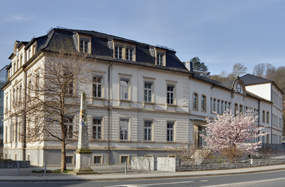 the company has been governed by Walter Lange. In 1942 he was mobilized to the military service, took part in the warfare at the Eastern Front, was injured seriously in a battle for Königsberg. The Second World War launched the final strike to Glashütte watch industry. In 1945 an air raid was performed on the city resulting in its historical part being destroyed down to rock bottom. Returning to his hometown after the war, Walter found the watch manufacture, destroyed by the bombings. He paid all his effort to start watch production again, but his efforts didn't lead to anything. the company has been governed by Walter Lange. In 1942 he was mobilized to the military service, took part in the warfare at the Eastern Front, was injured seriously in a battle for Königsberg. The Second World War launched the final strike to Glashütte watch industry. In 1945 an air raid was performed on the city resulting in its historical part being destroyed down to rock bottom. Returning to his hometown after the war, Walter found the watch manufacture, destroyed by the bombings. He paid all his effort to start watch production again, but his efforts didn't lead to anything.
In 1949, after Germany was split into 2 states, the soviet government expropriated A. Lange & Sohne production capacities and the ancient manufacture was turned into A. Lange & Sohne national economy plant (VEB) and after that – Mechanik Lange & Sohn VEB. In 1951 the brand's name was long forgotten and the expropriated A. Lange & Sohne, Uroffa, Ufag, Otto Estleer watch brands and Lindig & Wolf, R. Muhle und Gossel precise mechanics manufactures were united into the “Glashütte Watch Plants” (GUB). The manufacture, that used to produce masterpieces of watchmaking art, became a “«Russian chronometers» alarm-clock plant”.
Walter Lange had to leave the country: he resigned to enter the communist party and “fell into disfavour” with the soviet government. He tried to set up production of watches, based on the Swiss IWC in the old German jewelery centre, Pforzheim. But this enterprise didn't have success.
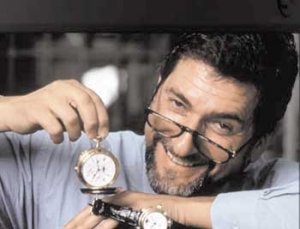 In 1976 the In 1976 the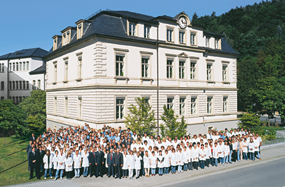 government of the German Democratic Republic proclaimed amnesty for all the people, who ran away from the soviet occupation zone and Walter Lange started visiting his native town of Glashütte, kept in touch with old watchmakers, hoping to restore his family business some day in the depth of his heart. The coinsidence of historical events prepared a kindly soil for it: in 1990 the Berlin wall fell and the German state unification process started. In December of the same year Walter Lange set up a new company: Lange Uhren GmbH. He was helped by Günter Blumlein – the man, who restored the production of such companies, as IWC and Jaeger-leCoultre. Blumlein became A. Lange & Sohne's co-investor. 3 million deutschemarks were invested into the watch company's revival. The new company was registered for the old trademark: A. Lange & Sohne. The quality standard, set up by the company's government, sponged out the memory of semicentennial oblivion and inactivity. Nowadays the company takes the leading positions in precise and high quality watches production again. The first watch, signed by the old A. Lange & Sohne brand was presented in 1994 at the Dresden Palace. government of the German Democratic Republic proclaimed amnesty for all the people, who ran away from the soviet occupation zone and Walter Lange started visiting his native town of Glashütte, kept in touch with old watchmakers, hoping to restore his family business some day in the depth of his heart. The coinsidence of historical events prepared a kindly soil for it: in 1990 the Berlin wall fell and the German state unification process started. In December of the same year Walter Lange set up a new company: Lange Uhren GmbH. He was helped by Günter Blumlein – the man, who restored the production of such companies, as IWC and Jaeger-leCoultre. Blumlein became A. Lange & Sohne's co-investor. 3 million deutschemarks were invested into the watch company's revival. The new company was registered for the old trademark: A. Lange & Sohne. The quality standard, set up by the company's government, sponged out the memory of semicentennial oblivion and inactivity. Nowadays the company takes the leading positions in precise and high quality watches production again. The first watch, signed by the old A. Lange & Sohne brand was presented in 1994 at the Dresden Palace.
The new company's factory was initially situated in Glashütte, in the building, where pendular clocks had been produced. A. Lange & Sohne moved to its historical building in 2000.
The ancient manufacture's revival gave a start to all Eastern Germany's watchmaking industry's development.
|
